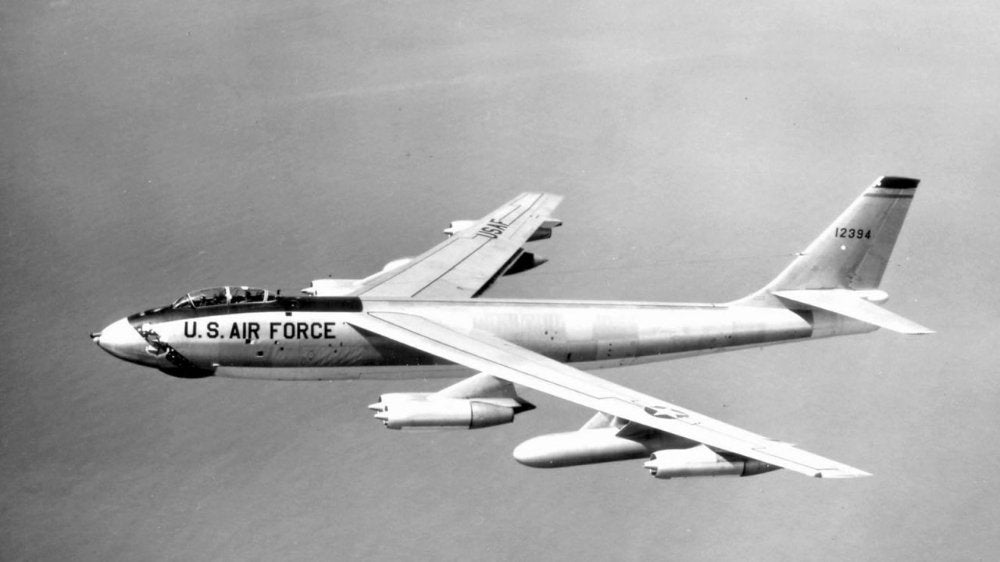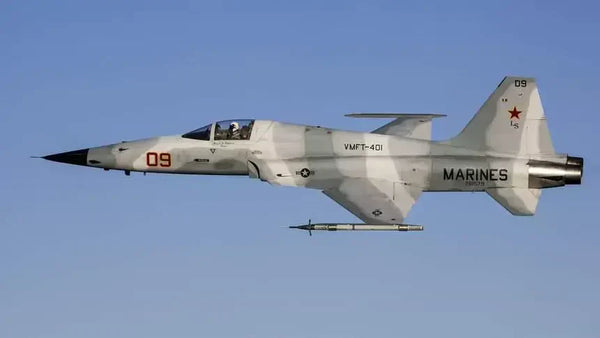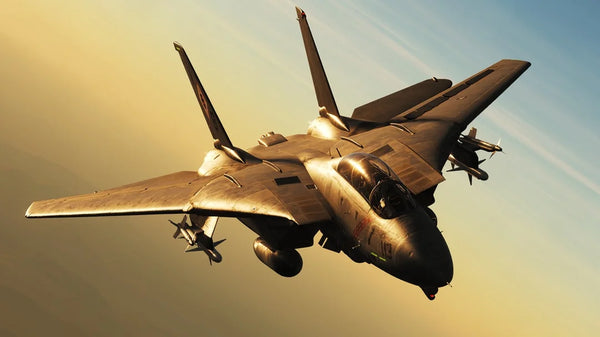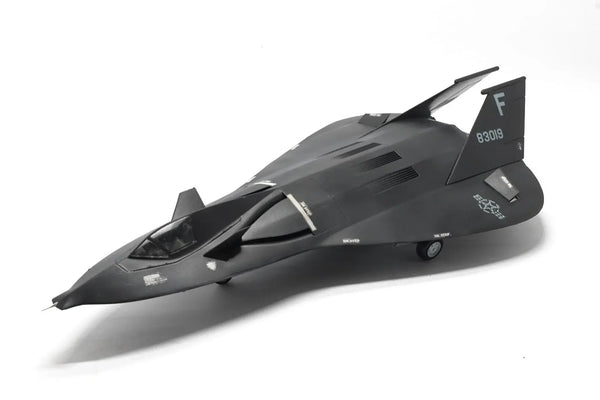The year is 1947. Against a backdrop of post-war uncertainty and the chilling dawn of the atomic age, something revolutionary took to the skies over the Pacific Northwest. It was a machine of profound elegance and radical speed, unlike any heavy aircraft that had come before. Imagine the moment: the air shivered not with the rhythmic clatter of pistons, but with the high-pitched shriek of pure jet thrust. This was the first flight of the B-47 Stratojet — a sleek, swept-wing silver giant cutting through the sky, a spectacle that instantly rendered every previous bomber obsolete.
The B-47 was not just a bomber; it was a technological leap that fundamentally transformed the U.S. Air Force bomber strategy. It established American air superiority and set the stage for decades of Cold War aviation, embodying the radical innovation required to meet the challenges of the burgeoning nuclear age. The roar of its six engines was the sound of the future arriving — a future that demanded speed, reach, and a constant, unwavering readiness.
The Gamble That Redefined Air Power
The Stratojet’s lineage begins with a profound gamble: the radical shift away from propeller power and conventional design towards a future few military planners could yet grasp. Following the intense combat demands of World War II, the U.S. military realized the need for a bomber capable of deeper, faster penetration into the emerging threat landscape of the Soviet Union. The speed of propeller planes was no longer sufficient to evade advanced enemy interception. The goal was simple, yet demanded a design that was anything but: create a bomber that could fly higher and faster than any fighter currently in existence.
This necessity fueled an intense period of Boeing B-47 experimental development. The company’s engineers, driven by a vision that surpassed current capability, took a daring conceptual leap. They embraced captured German aerodynamic research, specifically the concept of the dramatically swept-wing aircraft. This was the pivotal decision that defined the B-47’s entire operational envelope, enabling it to reach near-sonic speeds at high altitude — a performance curve unattainable by a straight-winged aircraft.
The result was the first operational six-engine jet bomber, marking the definitive dawn of the early jet age for strategic bombing. This commitment to extreme performance required close collaboration between Boeing and the newly independent U.S. Air Force under the Strategic Air Command (SAC). The B-47 emerged as the physical embodiment of the doctrine of massive retaliation.
An Aerodynamic Masterpiece
The B-47 design was an aerodynamic masterpiece, a form entirely dictated by the function of speed. Its unconventional silhouette was the result of this pursuit. The radical 35-degree sweep of the wings was the single most important element, acting as a crucial enabling factor in allowing the aircraft to cruise efficiently at high subsonic speeds. To power this marvel, the engineers employed the unconventional pairing of six General Electric J47 turbojet engines, mounted in sleek pods beneath the wings. This layout, necessary to clear the ground and avoid aerodynamic interference with the thin, flexible wings, was another bold Boeing aircraft innovation.
It required overcoming immense technical challenges related to engine placement, structural integrity, and wing stability—but the result was an aircraft capable of speeds approaching 600 miles per hour. This extreme design also necessitated the unique bicycle-style landing gear system, with outrigger wheels under the wings, solving the problem of accommodating gear on the thin, highly swept wings. Perhaps most importantly, the B-47’s features—its swept wings, podded engines, and high cruising speed—directly inspired the design of the KC-135 tanker and, most enduringly, the B-52 Stratofortress, securing the Stratojet’s foundational place in aviation history.
Life on Alert: The Cold War Mission
For two intense decades, the B-47 was the primary shield and sword of the West, carrying the immense responsibility of maintaining a fragile global peace. Its existence alone was a statement of strategic intent. The B-47 Stratojet's mission was clear and critical: deep-penetration strategic bombing, carrying the nuclear payload that formed the backbone of the West's nuclear deterrent missions. This was the era of Strategic Air Command (SAC) dominance, operating under the doctrine of "Minimum Essential Force." The B-47 was the indispensable, crucial component of the initial American nuclear triad.

The reality of this mission meant a constant, grueling readiness known as "Life on Alert." The bomber pilot stories from this era are tales of long, demanding flights—the "Chrome Dome" missions—where crews flew endless, high-altitude navigation tracks, often circling enemy airspace. The emotional reality was immense pressure; every crew was required to be ready to scramble at a moment's notice, potentially initiating the unthinkable. A B-47 crew member lived a life of constant high-intensity preparedness, a vigilance that defined the Cold War aviation experience. The very sound of the alert siren, signaling a sudden takeoff, was the sound of the world holding its breath, relying entirely on the speed and reliability of this six-engine jet bomber.
The Men Behind the Machine
While the aircraft was a masterpiece of machinery, its true strength lay in the discipline, dedication, and unflinching courage of the three-person crews inside. The culture within Strategic Air Command was notoriously demanding, molded by General Curtis LeMay. Their motto, "Peace is Our Profession," was pursued with a severity that matched the stakes. The B-47 Stratojet was a complex machine, and its pilots, co-pilots, and navigator/bombardiers were consummate professionals, whose lives depended on the perfect synchronization and immense trust forged during those long, high-stress missions.
To master the Stratojet required rigorous, high-intensity training, often involving the dramatic, necessary use of RATO (Rocket Assisted Take-Off) bottles to manage its massive weight and required takeoff speed. This training built a profound sense of shared experience. The immense pride of being part of the B-47 fleet became a source of lifelong connection and is central to the bomber pilot stories and the overall Cold War legacy remembrance. These were the men behind the machine, whose dedication ensured the nuclear deterrent missions remained credible, day after day, year after year.
The Sunset of a Legend
By the early 1960s, despite its revolutionary design, the relentless pace of technological change mandated a transition. The very nature of the strategic bombing mission was evolving. The B-47 Stratojet, designed for high-altitude, high-speed penetration, became increasingly vulnerable to the sophisticated Soviet surface-to-air missiles (SAMs) that were being deployed at a furious rate. The writing was on the wall: the bomber had to be replaced by something capable of flying faster, longer, and carrying a heavier payload.
The B-47 began its formal retirement as the heavier, longer-range B-52 Stratofortress took over the main strategic mission. However, the B-47’s impact was permanent. Its B-47 design principles carried directly over to modern aviation, defining the large jet airframe for the subsequent fifty years. Today, the few remaining examples of the B-47 Stratojet serve as essential bomber museum display pieces. They stand as magnificent, tangible relics of the technological race and the immense risks of the early jet age, teaching new generations about the ingenuity that secured American air superiority during the most volatile decades of the 20th century.

A Legacy in Wood and Memory
Decades after its final operational flight, the distinct, elegant sweep of the B-47 wing continues to inspire profound respect among veterans and collectors alike. For those who lived through the era, and for today's aviation collectible enthusiasts, the B-47 remains a powerful symbol of sacrifice and technological achievement—a tangible piece of the Cold War legacy. Its story is not just one of metal and thrust, but of human dedication under extreme pressure.
This enduring appreciation for the aircraft's precision engineering connects directly to the modern collector's market. A handcrafted jet model, particularly a mahogany aircraft model of the B-47, captures the sleek, almost delicate elegance of the swept-wing aircraft. It is a unique and sought-after aviation collectible, serving as a tribute to the men and the machine. This stunning replica preserves a vital piece of aviation history in a beautiful, tactile form, allowing enthusiasts to honor the blend of engineering genius and human bravery that defined the B-47. The B-47 Stratojet’s service ensured the peace, and its design inspired the future. It is an enduring icon of the jet age, a legacy of power, speed, and strategic purpose.

B-47 Stratojet wooden model
Honoring the Legend
The B-47 Stratojet remains a timeless symbol of ingenuity, precision, and courage — a masterpiece that carried the U.S. Air Force into the jet age. Celebrate this aviation icon through our exclusive collection of hand-crafted B-47 Stratojet models, each meticulously designed to capture the grace and power of this historic bomber.
Bring home a piece of aviation history today — own a handcrafted B-47 Stratojet model and honor the men and machines that shaped the skies.
✈️ Own This Masterpiece© PremiumWoodArt — The B-47 Stratojet




